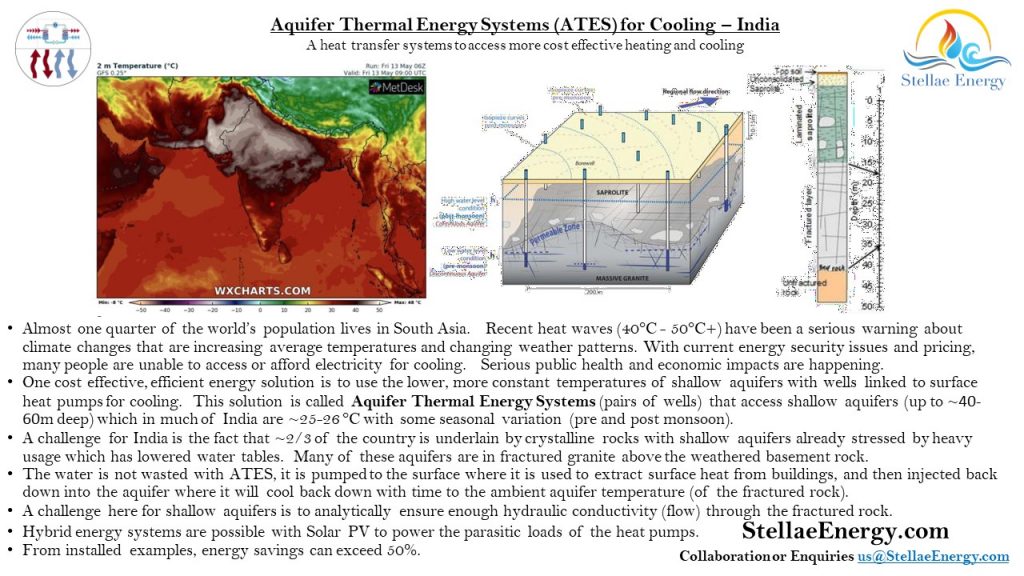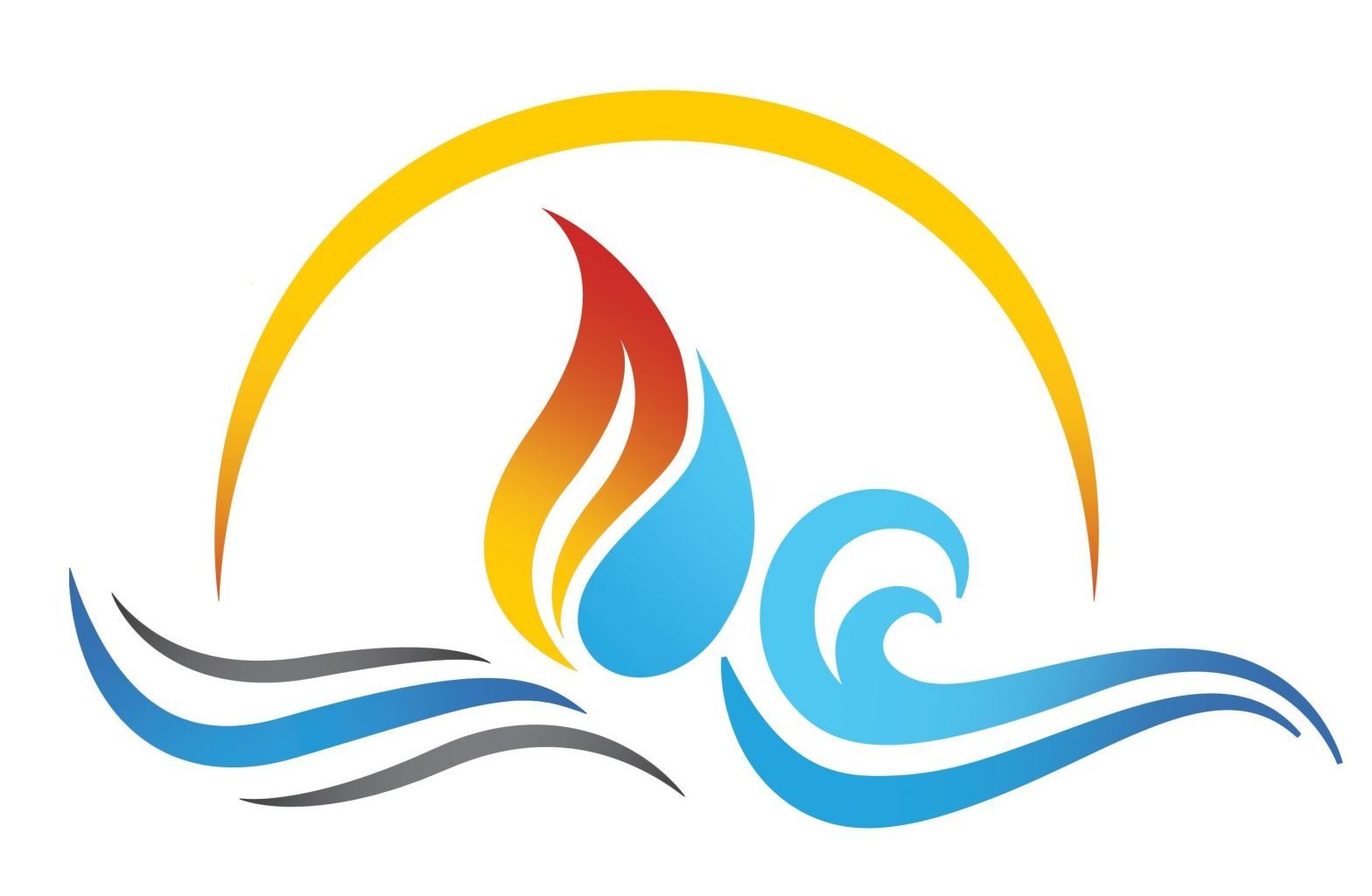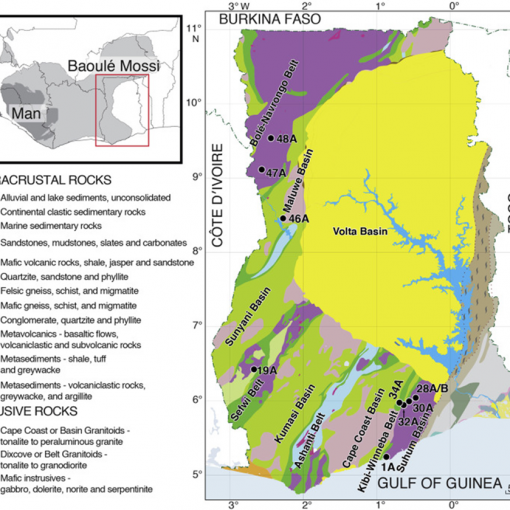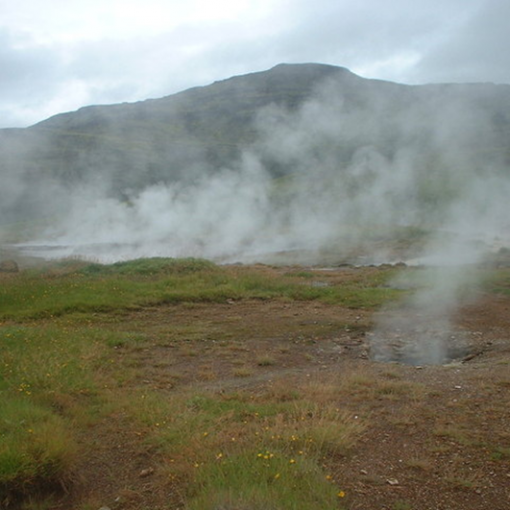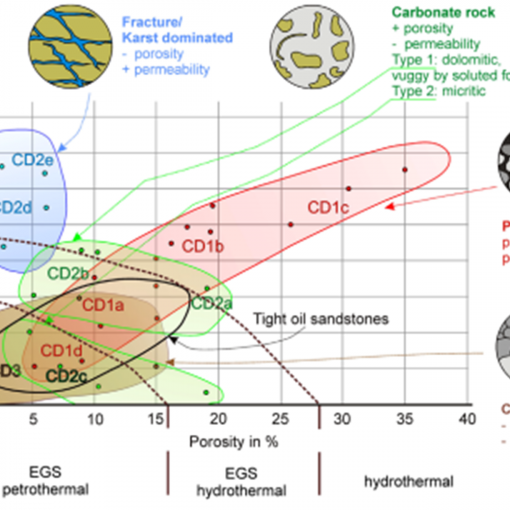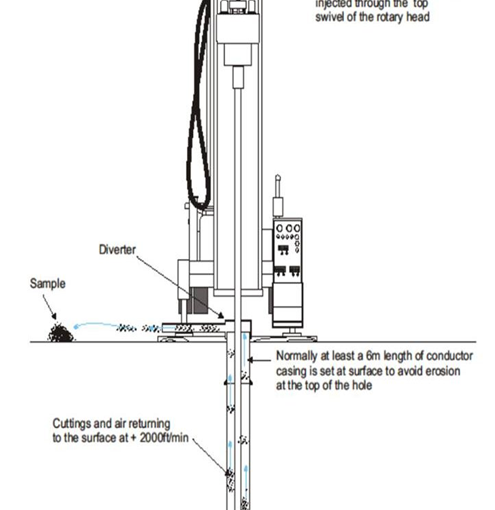A heat transfer systems to access more cost effective heating and cooling
Temperature extremes and high energy prices are causing economic and health risks in multiple countries including India. Many people either do not have access to air conditioning or they cannot afford the cost of electricity required. One potential solution is Aquifer Thermal Energy Systems (ATES) which make use of shallow aquifers and open source groundwater heat pumps to provide cooling at up to ~50% of the cost of electrical air conditioning (air-to-air heat pumps).
If your country faces these challenges and you are interested in collaboration or wish to enquire how to access this solution, contact us@stellaeenergy.com .
heatpumps #geothermalenergy #groundwater #aquifers #renewableenergy #energytransition #india
- Almost one quarter of the world’s population lives in South Asia. Recent heat waves (40°C – 50°C+) have been a serious warning about climate changes that are increasing average temperatures and changing weather patterns. With current energy security issues and pricing, many people are unable to access or afford electricity for cooling. Serious public health and economic impacts are happening.
- One cost effective, efficient energy solution is to use the lower, more constant temperatures of shallow aquifers with wells linked to surface heat pumps for cooling. This solution is called Aquifer Thermal Energy Systems (pairs of wells) that access shallow aquifers (up to ~40- 60m deep) which in much of India are ~25-26 °C with some seasonal variation (pre and post monsoon).
- A challenge for India is the fact that ~2/3 of the country is underlain by crystalline rocks with shallow aquifers already stressed by heavy usage which has lowered water tables. Many of these aquifers are in fractured granite above the weathered basement rock.
- The water is not wasted with ATES, it is pumped to the surface where it is used to extract surface heat from buildings, and then injected back down into the aquifer where it will cool back down with time to the ambient aquifer temperature (of the fractured rock).
- A challenge here for shallow aquifers is to analytically ensure enough hydraulic conductivity (flow) through the fractured rock.
- Hybrid energy systems are possible with Solar PV to power the parasitic loads of the heat pumps.
- From installed examples, energy savings can exceed 50%.
